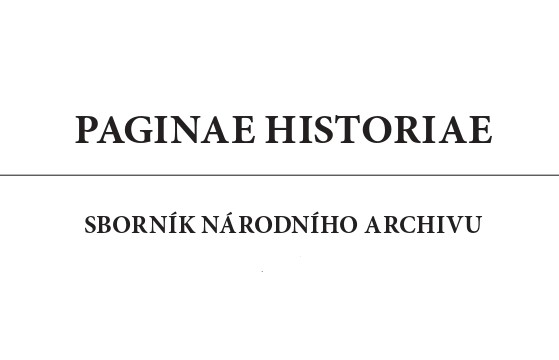Urovnání československo-vatikánských vztahů a jmenování nového nuncia v roce 1935
Reconciliation of Czechoslovak-Vatican Relations and Appointment of a New Nuncio in 1935
Author(s): Zlatuše KukánováSubject(s): Diplomatic history, Political history, Interwar Period (1920 - 1939)
Published by: Národní archiv
Keywords: diplomatic history; Czechoslovakia; Vatican; New Nuncio; 1935;
Summary/Abstract: The study deals with the reconciliation of the Czechoslovak-Vatican relations in the half of the 1930s and with the appointment of a new, chronologically fourth Prague nuncio after a diplomatic controversy and departure of the former nuncio Pietro Ciriaci in autumn 1933. The normalisation of the mutual relations was preceded by long and complicated discussions on implementation of the “modus vivendi”, which was agreed upon by both sides in 1927 and which enabled the unification of state and diocesan borders especially in Slovakia. The period from autumn 1933 and summer 1935 was also filled with negotiations pertaining to appointment of a new nuncio, with several names being mentioned as candidates. Among those were Vatican officials such as D. Tardini and G. B. Montini as well as former secretaries of the Prague Nunciature A. Arato, S. Ritter and G. Panico. Successful negotiations between the Czechoslovak diplomacy, representatives of the Political Catholicism and official catholic circles led to a participation of a papal legate in the State Catholic Convention in Prague in June 1935, which represented another step to improvement of mutual relations. Preparations, program and reception of the Convention, including the evaluation of the journey of French Cardinal Jean Verdier to Czechoslovakia soon contributed to a filling of a vacant Prague nuncio post. Pius X I decided to appoint an experienced diplomat Saverio Ritter (1884-1951), well-acquainted with local Czech and German speaking milieu, which he cooperated with during his stay in Milan. S. Ritter familiarised himself with Czechoslovakia in 1927-1931 when he played a key role as a mediator during complicated negotiations between Czechoslovakia and Vatican to achieve a “modus vivendi”, then he gathered experience in the nunciature in Bern that he administered instead of an incapacitated nuncio. The most important rival candidate of Ritter was from April 1935 Giovanni Panico, auditor and chargé d ’affaires in Prague, who was supported by the Political Catholicism movement and by Czechoslovak diplomacy. A t the end of the 1935, Panico, however, had to leave Prague and he became apostolic delegate in Australia and in New Zealand. Antonio Arato was directed to offices in Baltics states where he stayed till 1940. The Holy See filled a strategically important nunciature at the boundary of Nazi and Bolshevik ideology with a personality who managed to unite Czech and Slovak Catholicism (with the help of Catholic intellectual J. J. Rückl) before the presidential election and in this way to ease the election of E. Beneš. A few weeks before the election, Czechoslovakia was given, as the last state from the former Habsburg lands, a cardinal title for the Prague Archbishop K. Kašpar. This step was a symbolic conclusion of the summer convention of Czechoslovak Catholics. The author specialises in history of Czechoslovak-Vatican diplomatic relations (1920-1950) and role of the Church in inter-war Czechoslovakia. The study is based on archival sources of National Archives in Prague, Archives of Ministry of Foreign Affairs, Archives of National Museum, Presidential Office Archive and Auswärtigesamt in Berlin.
Journal: Paginae Historiae
- Issue Year: 23/2015
- Issue No: 1
- Page Range: 163-216
- Page Count: 53
- Language: Czech

